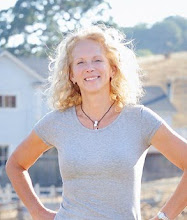Evidently you all understood the laying hen thing not to be confused however with the meat chicken thing.
The Meat Chicken and the Laying Hen used to be the same bird. Birds lays eggs and can also be great for eating. The only reason they are separate is the demand for more of them to eat or the demand for eggs. The bird industry practiced natural selection and identified birds that layed more than others and bred them. Those that were bigger in breast or leg meat were also selected and bred. They tended to be different birds. So we ended up with layers and meat birds. Here is the crazy thing…..laying hens, as you recall from last weeks lesson, start laying around 6 months old. Meat birds are full size at 8 to 10 weeks old! Not kidding. The grocery story bird is processes at 5 and 6 weeks old to deliver a 3 lb bird. That has been going on since the 60’s and the reason for the is due to…..drum roll…..COST! Birds at 5 weeks old get really hungry like a 14 year old boy. They require more food and being in cages and/barns will kill each other for more food. The food cost more so they began processing the younger bird. Less meat but costs less. The 8 to 10 week old bird, raised on pasture will grow to full size, have 1/3 more meat on it (higher meat to bone ratio than the 5 week old bird) so it is more efficient. The Omega 3’s, CLA’s and other important nutrients will be in high quantities in a pasture raised older bird vs little to none in a caged or barned bird. Another critical point is the food they eat. Corn and soy free food is important for not only the birds but for us as well. The overuse of corn is so prevalent in processed food and meat we are all practically made of corn and corn is a just a step from sugar. Soy has so many reason to not eat it I don’t have the space so read the books. Nourishing Traditions has a good chapter in the front that nets it down if you need too. So back to the meat chicken….we have ours shipped in from Iowa. 500 birds, 2 times per month. Sounds ridiculous. I know. We can’t get a hatchery to ship without a vaccine in the egg and antibiotics in their water. The assumption is that because we are ordering a larger quantity we must be using cages/barns and we are not ordering enough for them to change their process. Understood. We also are not ready to begin a hatchery. Not enough space to pasture all the chickens that we would need to lay all those eggs. Maybe next year. Unless one of you is interested in starting a hatchery….No? I digress. Just before the birds arrive we fluff up the wood shavings in the brooder, spray with water to get the composting started (the ammonia from the chicken pooh and pee bonds with the carbon in the wood shavings). This creates a warm floor for the birds to sit on and it also creates an environment for little insects to grow. Those insects are the birds first real protein. The birds are shipped here overnight and we pick them up at the post office. Weird but they are nice people at the post office, in the back, at 6am. We bring them home and put them in the little chick brooder. They need 95 degree heat to start, water and chick feed (corn and soy free of course). After 2 weeks we move them to pasture in to chicken tractors (10x12x2). We move them every day so they are on a fresh jungle of grasses, cow pies and have lots of bugs to eat! They dig through the cow pies to get to the fly larvae that have hatched. The act of digging through the pies spreads out the pies and fertilizes the ground better.
After 8 to 10 weeks we process here on the farm. They weight 7lbs or more and dress out at 4lbs. The goal is always more than 4lbs. Some birds are just smaller by default but most are 4.5lbs. Birds don’t need to be cooked to death like our parents taught us. You can tell when it is done by checking the inner thigh where it connects to the body. If there is raw meat there or blood it is not done. Don’t over cook. Samonella comes from stressed out birds. The salmonella is a natural in the intestine of a chicken and a necessary balance but if the bird becomes acidic from too much stress the salmonella will grow out of proportion and infect the bird. Birds processed in the USDA plant are washed in bleach and water or hydrogen peroxide, some form of astringent to kill infection. We don’t do this, our birds are happy birds right up to the end.



0 comments:
Post a Comment